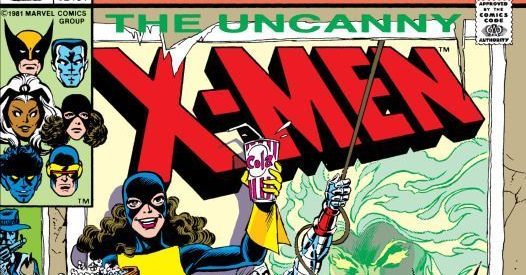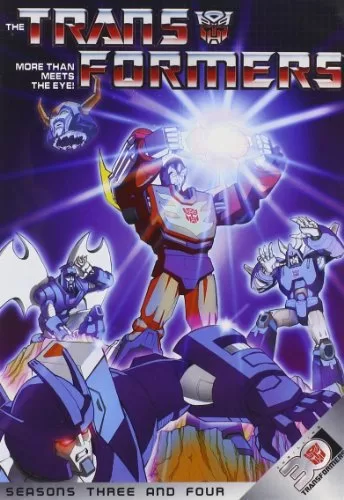
“A House Blowing Up Builds Character”: A Retrospective of Claremont’s X-Men, Part 8

Following their last battle with Magneto in Uncanny X-Men #150, the team“s situation had changed once more. Cyclops had just returned to the X-Men, and most of the team had relocated to Magneto“s former island base in the Bermuda Triangle. In fact, this was an inconsistent location for the X-Men, as the team would often jump back and forth from the island to the X-Mansion and back again. Some of this comes down to plot convenience, and at other times, it was the result of the varying artists that were on the book at the time. Dave Cockrum had designed the island base, and the team usually remained there during the issues he was drawing.
Claremont“s next issues were a pair of annuals: Avengers Annual #10 and Uncanny X-Men Annual #5. Curiously enough, the Avengers Annual ended up having far more impact and interest than anything that happened in the X-Men Annual. Part of the reason was that the Avengers Annual involved much more important characters, including the Avengers and the Brotherhood. Part of it was that the Avengers Annual had far deeper and more lasting impact, especially for Carol Danvers. However, Avengers Annual #10 is best remembered for the first appearance of Rogue, who would be involved with both the Avengers and the X-Men in the years ahead.
Avengers Annual #10 is a landmark issue for both Carol Danvers and Rogue, and it“s the issue that forever dominates their relationship. The main reason for this is that Rogue was at the time a member of Mystique“s Brotherhood of Evil Mutants, and she made a fateful choice that impacted both of them. Rogue was born with a tragic mutant ability””she can absorb the powers, psyche, and memories of anyone she touches”¦ and if she does so long enough, the transfer is permanent. Though we never see the battle in this issue, Rogue ambushes Carol Danvers and permanently absorbs her mind and abilities, leaving Carol a catatonic blank slate. The body of Carol is then dumped in the bay off San Francisco, where she“s found by her best friend, Jessica Drew, otherwise known as the original Spider-Woman.

Though Claremont never gets too much into the details behind Rogue“s attack in the issue itself, he had intended for the two to meet eventually. Claremont had been the writer for the majority of Carol Danvers“ first run on Ms. Marvel, where he created and introduced Mystique as a Ms. Marvel villain. Claremont had other plans later to bring Mystique back into conflict with Carol, including bringing in Rogue, though these were cut short when the title was cancelled. However, Claremont had other ways to continue that story, and this Avengers Annual becomes the vehicle to explore those unfinished ideas.
This particular story is mostly not that interesting, at least in terms of the plot around Mystique and the Brotherhood. It“s not even entirely clear what Mystique“s objective was in taking down the Avengers, at least beyond the defeat of the heroes. The Avengers have never been Raven“s traditional villains beyond the fact that Carol Danvers was a member, and at this time, mutant issues were not something the Avengers were deeply involved in. The result is a story where the action is well-executed, but it doesn“t add to any kind of overall point, and thus the battle becomes fighting for its own sake. Still, it is interesting to watch Rogue and the Brotherhood battle the Avengers, at least for the novelty of watching an unusual and rare matchup.
In fairness to Claremont, the Brotherhood is not his real interest with this story; instead, it turns out to be Carol. Once the Brotherhood is defeated, Claremont gets to his real point”¦ addressing the mistreatment of Carol Danvers by Marcus Immortus and the Avengers in the infamous Avengers #200. Although the details are probably best left ignored, Carol was mentally and physically abused by Marcus, the son of Immortus (a future incarnation of the villain Kang). In practice, it was a situation where Carol was violated, with the Avengers acting insensitively and inappropriately towards an act of violence and mental manipulation. It was a moment where the Avengers come across as unwitting accessories to a horrible crime, even at times encouraging Carol“s departure with her abuser. This is a dark moment that lingers in the history of Carol Danvers, and it isn“t a proud one for either her or the Avengers, who should stand against these kinds of acts.

Claremont“s approach to this situation is one many modern writers might not take, but it was what the character needed at that time. Instead of ignoring what happened or sweeping the problematic history under the rug, Claremont directly addresses the consequences of the Marcus story. He shows how Carol would be affected and destroyed emotionally by her realization of what happened, leading to her distancing herself from the Avengers. He also has Carol confront the Avengers with the reality of what they“ve done, making it clear why Carol no longer trusts them and how the Avengers failed her as friends and teammates. This is a powerful statement made by Claremont through the character of Carol, and an affirmative defense and rebuilding of a character who had been failed by her writers. After this, Claremont brings her in as a supporting character to the X-Men for a short time.
That year“s X-Men annual was, unfortunately, much less interesting, and that“s regrettable given the book“s guest-star. As mentioned with the Doctor Doom story in our previous installment, Chris Claremont always had a strong affection for the Fantastic Four, and he would return to them from time to time during his long career. As always, Claremont was drawn to strong heroines, and in this issue that happened to be Susan Richards, the Invisible Woman. However, the Sue in this annual is not the much stronger character that was developed by John Byrne, or the one Claremont wrote during the Heroes Return era on Fantastic Four. Unfortunately, Sue is woefully underutilized in this story, which focuses on a conflict between the Shi“Ar and the Badoon, and the capture of the FF. Sue teams up with the X-Men to rescue her family, and the result is a fairly predictable and forgettable issue. On paper, this should have been much better, but the lack of a strong villain like a Doctor Doom or any compelling stakes deflates the potential of an Invisible Woman/X-Men team-up. Claremont would learn from this experience, however, and their next meeting would be handled much better.
Back in Uncanny X-Men, Dave Cockrum takes a breather from the main title for a couple of issues, but that doesn“t make them any less impactful. Kitty Pryde is called away from Xavier“s School by her parents, who attempt to force her to go to the Massachusetts Academy. On the surface, this seems an odd decision, and in the end it turns out to be a trap set up by a now-recovered Emma Frost and the Hellfire Club. The last we“d seen of Emma, she had been driven comatose by Phoenix after their last telepathic battle. The calling away of Kitty back to the Massachusetts Academy leaves Kitty and Ororo suspicious, and those suspicions are justified. Emma springs the trap, kidnapping Ororo and performing a mind transfer, leaving Ororo trapped in Emma“s body while Emma impersonates Ororo. Ororo is then trapped in the Massachusetts Academy by Hellfire guards, preventing her from alerting the X-Men about the Hellfire plot.
Claremont never elaborates as to whether Kitty“s parents transferred her of their own free will, which is a nagging question about the setup of this story. Emma Frost could easily telepathically compel them to do so, and she doesn“t have any of Xavier“s moral reservations. Xavier never investigates to make sure that Emma isn“t manipulating Kitty“s parents, a bizarre attitude coming from him. Everyone simply assumes that Kitty“s parents are acting normally, which is an odd assumption, given than Emma has shown no difficulty with interfering with them before. In any case, it“s very possible that Emma did manipulate Kitty“s parents even if it“s not openly established, and given how smoothly the Hellfire plan proceeds, it“s likely that there was some telepathic tampering involved.
Once the mind-switch is established, Emma (wearing the body of Ororo) infiltrates the X-Men while Sebastian Shaw initiates the next stage of his plan. Shaw follows with a full-scale assault of the X-Mansion with Sentinels and the full might of the Inner Circle. With Emma now in full possession of Ororo“s powers and the X-Men in disarray, the Hellfire Club manages to take the X-Men down without too much effort, even with Amanda Sefton helping the X-Men.

Storm is always at her most interesting when threatened with imprisonment and confinement, and that is no less true here. In this particular case, Ororo is not only confined within a room in the Massachusetts Academy, she“s also confined in the body of Emma Frost, her hated enemy. Her power over the winds are gone, since those are in her true body. When Ororo awakens after the transfer, even her senses are limited, since Emma doesn“t have Ororo“s keen night vision. It“s a confinement that horrifies Ororo at first, and it“s one that she suffers through at first. However, Ororo does retain some things, mainly her thieving skills and her ability to pick locks. Once she adjusts to Emma“s body, Ororo uses her skills to free herself and slip out of the academy with an unconscious Kitty.
The following issue largely focuses on Storm (still trapped in Emma“s body) and Kitty as they attempt to rescue the X-Men. The best part of this particular arc is that it focuses on the relationship between Kitty and Ororo and how far they truly trust each other. Kitty has no reason to trust Ororo in this position; as far as Kitty knows, she“s dealing with Emma Frost. Claremont does a good job of addressing the trust issues; there“s no way for Ororo to objectively prove she“s not Emma, especially since she has Emma“s telepathic powers. Kitty has to rely on faith, and it isn“t until Ororo slips out of a knot that Ororo trained Kitty to tie that she begins to be convinced. Moreover, the relationship is strained by the arrival of Stevie Hunter, who Ororo called to drive them back to the mansion. The Kitty/Ororo relationship was often tested by Stevie“s presence, usually because of Ororo“s own attachment issues. In this case, though, Kitty is certain she knows who Stevie Hunter is, whereas Ororo is wearing the body of an old enemy and can“t be fully trusted.
The other interesting point about this issue is watching Ororo and Emma struggle with each other“s powers, and it“s difficult in both cases. With Ororo, she struggles with filtering out stray thoughts and telepathic noise, and even telling the difference between thoughts and words. However, she relies on her memories of Jean Grey and Charles Xavier to help her cope with the ability, and even then, it is an ability she can“t fully grasp in such a short time. Emma struggles far more, since she doesn“t have the experience of friends to help control the ability, nor does she fully comprehend how Ororo“s powers even fully function. This ends up being a major deciding factor in the rematch between Emma and Ororo, leading to Ororo defeating Emma before finally switching them to their original bodies. Regardless, it“s a situation that allows Claremont to dive into the basic function of how their respective powers work, which can only happen with characters who are unfamiliar with their own abilities and their own bodies. It“s also a story that helps define their respective identities; Ororo is who she is because of her personality and experiences, and the form she inhabits makes her no less a heroine.
The battle does a significant amount of damage in the end, however, trashing a fair portion of the mansion aside from the hangar and other key equipment. Ororo is also fairly injured as well, but in a strange self-inflicted way; these are wounds Ororo gave her own body when she was driving the body of Emma Frost, but she“s left to endure the pain she caused herself. Still, Ororo“s act of retrieving her true body was an act of reclaiming her own stolen identity. For Ororo, that is worth any price, as she must be herself and she must be free, whatever the cost to herself.
After two major battles with the X-Men“s most dangerous enemies””Magneto and the Hellfire Club””Dave Cockrum returns to the title at an opportune time. Although Claremont is perhaps best known for his characterization and broad, sweeping epics like Dark Phoenix and Days of Future Past, some of his best issues are his single-issue stories. “Kitty“s Fairy Tale”“ is perhaps one of Claremont“s greatest “done-in-one”“ stories, and certainly one of his finest Kitty stories. I admit this one is a personal favorite of mine, not simply because it“s a fun comic, but also what it says about Kitty Pryde through the story that she tells.

Chris Claremont draws on numerous influences in his writing, but his more interesting ones include his love for old swashbucklers, Edgar Rice Burroughs, and the Arabian Nights. The basic premise is that Kitty Pryde is telling a bedtime story to a 6-year-old Illyana Rasputin, who has been living with the X-Men since she was rescued from the assassin Arcade. Kitty essentially fabricates a lighthearted swashbuckling fantasy tale, where a thinly disguised group of X-Men re-enact their greatest hits in fantasy dress. Kitty casts herself as the heroine, “Pirate Kitty”“, with Colossus as her faithful sidekick. Xavier is a wizard who travels on a flying carpet, Scott is the noble prince searching for his lost love, and Ororo is a powerful genie. There are also much more humorous takes, such as a greatly exaggerated take on Logan, and Kurt as a “Bamf”“, a cute-looking teleporter who makes passes at any women in his path. The villain of the piece is Dark Phoenix, who has been transformed by a magic curse that the X-Men must break.
On the surface, Kitty“s Fairy Tale is an entertaining adventure in the mold of Sinbad or The Princess Bride (which may have been an influence on this story). However, on a deeper level, it shows how Kitty truly looks at her friends and teammates in the X-Men. Pirate Kitty is an idealized version of Kitty herself, the heroine she wants to become. She sees Peter Rasputin as dependable, the loyal friend who will always be there to support her, so she casts him as Pirate Kitty“s best friend and sidekick. (This view is challenged after the original Secret Wars, but that“s for another discussion.) Professor Xavier is the good wizard, reflecting the mentor role he plays with his students. She sees Cyclops as “a prince, a mighty warrior, a just ruler”“, reflecting Scott as a good man and a skilled leader. These are generally accurate takes for a fourteen-year-old girl to have, showing Kitty“s intelligence and her understanding of the people around her.
Kitty“s interpretations get much more exaggerated when looking at the characters she“s closest to””namely Kurt, Logan, and Storm. Likely the exaggerations are meant as a form of affection, and she“s most comfortable in making fun of the people she loves most. With Kurt, she focuses on his surface traits””his swashbuckling nature, his laughter, and his role as the romantic hero. With Logan, she takes his more animalistic qualities and takes them even further, casting him as “The Fiend With No Name”“. The moment where Logan devours an entire can of beer in one gulp pokes gentle fun at Logan“s love of beer, followed up quickly by the Fiend calling out Cyclops for taking Jean from him. Ororo is much more serious than she“s normally written””which is saying something for Claremont””while retaining her deep friendship with Jean. Kitty gives Ororo the goddess-like dignity of the character and even elevates her more than usual, showing the deep respect Kitty has for her adopted mother figure.

As entertaining as the writing is, Dave Cockrum contributes to the flavor of the fairy tale through the visual designs of the fantasy X-Men. Some of them may have been Cockrum finding a use for old rejected design elements, such as his look for Storm. In the case of Pirate Kitty and Colossus, Cockrum gives them a much more swashbuckling flair. Kitty“s look is exaggerated with the feathered hat and the buccaneer boots, while looking traditionally Kitty (including her Star of David necklace). Colossus is more of a “salt of the earth”“ design, looking like a pirate but more like a common sailor, emphasizing his strength and brawny nature. Cockrum also makes the Arabian Nights influence work, incorporating a turban as Cyclops“s eye covering and using a flying carpet as a substitute for Xavier“s wheelchair. However, Cockrum’s most influential addition was the reinvention of the Blackbird jet as a dragon named Lockheed– a hugely important character to Kitty’s life after the Brood Saga.
In the end, there“s a happy ending to the fairy tale, and Kitty gives Scott a gift””the life with Jean that he couldn“t have in the real world. It“s the kind of ending that a bright-eyed teenager would wish for her friends, and it doesn“t go unappreciated. It“s a story about a young girl“s love for her friends and how that love redeems and gives hope for the future. On another level, “Kitty“s Fairy Tale”“ is also a dream that Chris Claremont shared, as it reflects the original ending of the Dark Phoenix Saga, one where Jean lived and settled down with Scott. I fully admit that “Kitty“s Fairy Tale”“ is a personal favorite””it“s a light “change of pace”“ story that shows Claremont“s comedic side, but it also is a character study of Kitty Pryde through the metafictional construct. For fans of the Hickman-era X-Men, it also is an unintentional prelude to the Marauders series, where Kitty truly lives her dream and becomes a pirate.
The writing becomes serious once again with the Deathbird/Brood story arc, which features the return of the Shi“Ar and the Starjammers. The story begins with Scott“s father Corsair making an unexpected arrival at the X-Mansion, where he“s chased by an alien race called the Sidri. The reunion between father and son is explosive on several different levels. In the first place, Scott finally works out who Corsair is, leading to a confrontation between the two and Ororo. At this time, Corsair had kept his identity a secret from Scott, in the hopes of sparing him pain; Jean had learned the truth telepathically, and Ororo had been sworn to secrecy about this secret. Much of this arc is about Scott accepting Corsair as his father, despite their many differences, and that angle is perhaps the most interesting aspect of these few issues.

Scott, Corsair, and Storm are forced to escape from the mansion in the Blackbird, and at the perfect time. Not long after their departure, the Sidri destroy the X-Mansion, the first notable time that this has happened. Although the mansion being destroyed becomes a running joke in later years, even becoming a gag in the first Deadpool film, at this time it was a surprising moment. Not much is truly done with this, and it isn“t long before the mansion is repaired, but it was a powerful moment at the time it was done. Moreover, it“s likely the mansion was destroyed with the idea of moving the team to Magneto“s island base, setting up Illyana“s transformation into Magik later. In any case, it“s a good idea that works for a momentary shock, but fizzles in the long term because the villain had no impact and the destruction ultimately doesn“t last for very long.
The next several issues are solid, but for the most part aren“t that interesting when compared to more memorable stories in the Claremont canon. It“s very likely that Claremont and Cockrum intended to use this arc as a vehicle to wrap up ideas introduced during their aborted run on Ms. Marvel. Deathbird had debuted in Ms. Marvel as a villain for Carol Danvers, though even there Claremont had hinted at Deathbird having connections with the Shi“Ar. With this arc, we learn that Deathbird is the older sister of the Shi“Ar Empress Lilandra, now scheming to usurp the Shi“Ar imperial throne. The concept is quite good, but it“s weighed down by some tedious execution, mainly involving Shi“Ar politics, some forced Avengers appearances, and action scenes that feel disconnected from the overall conflict. The story is not terrible, to be fair, just below par compared to previous stories.
That said, there are some redeeming features to the Deathbird story that are noteworthy. Tigra fans should take note of this story, since Claremont writes her briefly, and she“s fairly good in the scenes she gets. Tigra“s dynamic with Wolverine makes for a good bit of fun. However, the most entertaining subplot to this arc features Kurt and Kitty, who are forced to stay aboard the Shi“Ar flagship and investigate what the Shi“Ar are up to. Claremont points out that Kurt and Kitty are ideal for a stealth-based mission, since they can go anywhere and have powers ideal for spy missions. Also, Kitty“s computer skills (with some help from Xavier) allow her to hack into the Shi“Ar computer systems, using a holographic costume creator as a cover. This leads to some humorous moments that lighten up the story, including some lovely sight gags from Dave Cockrum. In the end, it“s discovered that a high-ranking Shi“Ar official, Admiral Lord Samedar, has betrayed Lilandra to Deathbird and the Brood. Samedar is ultimately dispatched at the end of the arc, Deathbird and the Brood are defeated, and Lilandra and Xavier are saved”¦ or so it seems.

Although the Brood are not the true focus of this story, this arc does set up an interesting plot point connected to them. Claremont does not fully explain what the Brood are or the full threat they pose. At this point, the Brood look like insectoid monsters that are working with Deathbird for their own reasons. However, Claremont strongly implies that Xavier was implanted with a Brood embryo during his time in captivity, a point that affects both X-Men and the upcoming New Mutants title. For some time, Xavier is in a comatose state, taking him out of play briefly while the Brood dominates his mind. Claremont was clearly influenced by the Aliens films around this time, creating the Brood as his own version of the Xenomorphs. He would often discover something that fascinated him in pop culture of his time and make it work for the stories he was telling, and the Brood may be among the most obvious examples. At the same time, the Brood are distinct enough to stand on their own, and the later Brood arc at the end of Cockrum“s second run would be their finest appearance in their history.
The other lasting change that comes from this story is Scott“s relationship with Corsair. They have their differences, not least because Scott is a much more idealistic character than his ruthless pirate father. However, Scott does ultimately accept Corsair as his father, and their reconciliation at the end of the arc leads to changes for Scott. By the time the arc ends, Corsair offers to introduce Scott and Alex to their grandparents, a decision that would lead to Scott“s first marriage.
Following this, Claremont and Cockrum turn their attention back to Carol Danvers and Rogue. This story follows from a logical question and a natural consequence, namely the question of the American government having detailed files on the X-Men and their associates. This predates the question of government surveillance by decades, and it still retains an air of relevance even now. The basic story is a spy caper, where Carol and the X-Men infiltrate The Pentagon to delete the government“s data on the X-Men. The basic means is a little far-fetched by today“s standards””the plan is to introduce a computer virus (designed with Shi“Ar software technology) into the Pentagon“s computers. However, it“s a solid enough premise for its time, and it sets up a decent story featuring Rogue and Mystique.

The encounter between the X-Men and Mystique is purely incidental, but it makes sense as a chance encounter. Mystique works for the government in her civilian identity of Raven Darkholme, and it makes sense that her daughter Rogue would be there. While it is a chance encounter, it“s not overly far-fetched, and it sets up a nice rematch with Carol and the X-Men. In some respects, this is a better issue, since there“s a stronger plot skeleton than the Avengers Annual, and it feels like there are actual stakes and tension involved in the mission. The X-Men are being pro-active in this case, with the Brotherhood there to stop the X-Men and take advantage of the opportunity. It“s also interesting in the sense that this is Carol“s first encounter with her old enemies Mystique and Rogue since her powers were stolen from her, giving a strong personal antagonism to the battle. In a real sense, it“s a Carol Danvers story with the X-Men along for the ride, and she gets some strong moments in this issue. Carol is given the choice of whether to kill Mystique””one that sounds easy given her past as a spy””but chooses to be a heroine instead, sparing her enemy despite her hatred.
In many ways, this overall sequence of issues largely centers on Ms. Marvel and ideas that Claremont and Cockrum wanted to resolve with the character. If you“re a fan of Carol Danvers, it“s worth reading the Claremont run on that book before looking through these issues, if only to get a larger picture of this segment of X-Men history. However, with the exception of the Hellfire Club arc and Kitty“s Fairy Tale, these stories are more centered on Carol Danvers than on the X-Men, and that unfortunately shows in these issues. However, Carol is handled well in the appearances she gets, and Claremont is easily my favorite writer on this character. However, the X-Men are somewhat lost in the shuffle in their own title, and it isn“t until later that Claremont regains his footing with them.
From an overall view, this was one of the weaker patches in the Claremont run, but it starts to improve again with later issues. Next time, we“ll be looking at more memorable single-issue stories and the beginning of a classic storyline, as Claremont turns from science fiction and fairy tales to horror and monsters. The X-Men face demon sorcerers, HYDRA, the return of the Brood, and the team“s first encounter with the King of the Vampires”¦ Dracula!
Author Profile
- Steve Sellers had been a fan of superheroes ever since Superman: The Movie. But it took the JSA, the Legion of Super-Heroes, Dragonlance, Lord of the Rings, Twilight Zone, and Chris Claremont's legendary run on the X-Men to make him a writer and a longtime fan of comics, fantasy, and science fiction. Steve is the co-creator of WHITE DRUID & MICHAEL NERO and GUARDIANS OF ELAYIM for Omen Comics, and he is also the creator of BLITZ and SHOCKWAVE for Revelation Comics (an imprint of Omen Comics).










